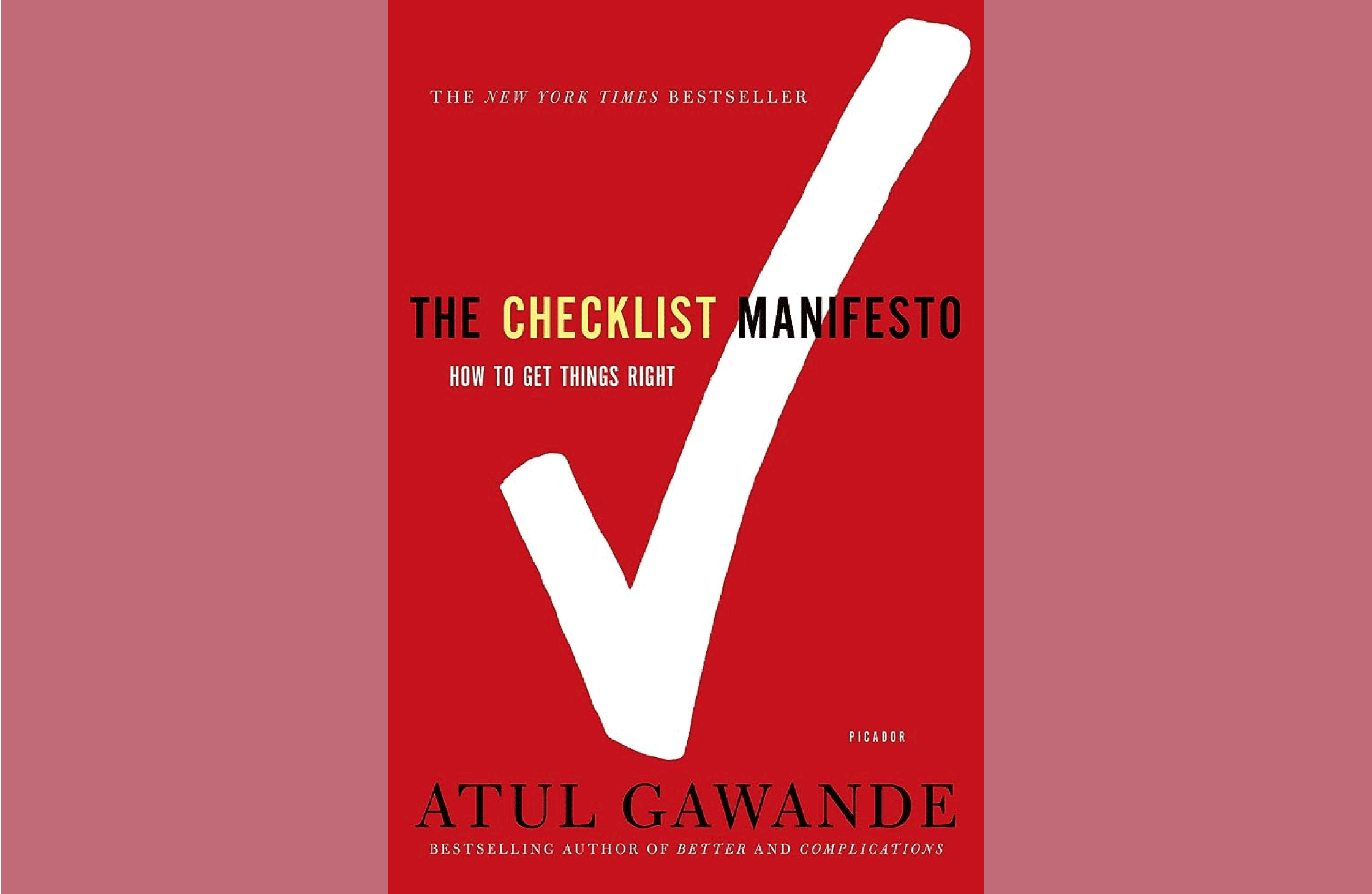How To Perfectly Breakdown Your Work Using the Genius of The Checklist Manifesto
Discover the transformative power of checklists in this practical guide. Learn from Atul Gawande's insights and craft effective checklists for flawless task execution. Empower your efficiency today!

The art of getting things done efficiently often eludes us. We juggle multiple tasks, navigate complex projects, and handle various responsibilities, all while striving for perfection. Is there a secret weapon that can help us accomplish our tasks flawlessly? The answer lies in the unassuming power of checklists.
I recently delved into Atul Gawande's enlightening book, The Checklist Manifesto: How to Get Things Right, and discovered practical wisdom that can transform how we approach tasks. Let’s embark on a journey to uncover the practical magic behind checklists, exploring their adaptability, effectiveness, and the process of crafting the perfect checklist for any endeavor.

Embracing Imperfections: The Human Touch in Tasks
“We are fallible. We will make mistakes. Failure is not a crime. The crime is failing to learn from failure.” - Atul Gawande.
We humans are wired to make mistakes. It's a fundamental part of our nature. Acknowledging our imperfections, far from being a setback, is the first step towards efficiency. Checklists act as our safety nets, compensating for our inherent flaws. They provide a structured framework, ensuring we cover all bases, even when our minds might falter. Embracing the reality of our humanity, we can use checklists to augment our abilities and achieve tasks with finesse.
Seamless Transitions: The Power of Checklists in Any Task
“The volume and complexity of what we know has exceeded our ability to deliver its benefits correctly, safely, or reliably. Knowledge has both saved us and burdened us.” - Atul Gawande.
One of the striking aspects of Gawande's book is its emphasis on the universal applicability of checklists. They aren’t confined to specific professions; they are versatile tools that seamlessly transition from the operating room to the kitchen and beyond. Imagine a pilot preparing for takeoff or a mechanic servicing an intricate engine. What keeps them on track? A checklist. This simple tool transforms complex tasks into a series of manageable steps, ensuring that each crucial detail is attended to precisely. In my personal experience, I’ve found that any task, regardless of its complexity, becomes less daunting and more achievable with a well-structured checklist.
The Dynamic Checklist: How It Works in Practice
“Under conditions of complexity, not only are checklists a help, they are required for success.” - Atul Gawande.
So, how exactly do checklists work their practical magic? They operate as dynamic guides, adapting to the unique requirements of each task. By breaking down tasks into bite-sized, actionable items, checklists provide clarity and focus. They facilitate a streamlined workflow, enabling us to tackle tasks step by step. The active voice in checklists is critical; it instills a sense of immediacy and ownership, compelling us to take action. As we progress through the checklist, we experience a sense of accomplishment with every tick, motivating us to move forward.
For instance:
"Inspect the patient's vital signs."
"Prepare the ingredients for the recipe."
"Review the client's requirements."
Each task is specific, actionable, and directly contributes to the larger goal. Ensuring an active voice in each checklist item empowers us to stay engaged and focused, propelling the task toward completion.
Crafting Your Perfect Checklist: A Practical Approach
Creating a practical checklist is both an art and a science. It involves understanding the task, anticipating potential hurdles, and organizing steps logically. Transition words are pivotal in guiding the user from one step to the next. Phrases like “next,” “then,” and “afterward” serve as signposts, indicating the sequence of actions. This logical flow prevents confusion and ensures a seamless progression through the checklist. Furthermore, simplicity is the hallmark of a practical checklist. Clear, concise language coupled with straightforward formatting enhances readability and usability.
For example:
Next, gather all necessary tools and materials. Then, carefully review the task requirements to ensure nothing is missed. Afterward, proceed to the initial step of the task, paying close attention to details.
Each transition acts as a bridge, linking one task to the next, fostering a natural and intuitive workflow.

Conclusion: Empowering Ourselves Through Practical Checklists
In a world where time is of the essence, and precision is paramount, checklists stand as our steadfast companions. Their practicality lies not just in their simplicity but in their ability to transform the abstract concept of a task into tangible, achievable steps. By infusing checklists with active voice and employing strategic transitions, we create tools that empower us in every endeavor.
The next time you face a daunting task, remember the practical wisdom of checklists. Dive into the intricacies of the task, identify the essential steps, and craft a checklist that speaks to you in clear, actionable language. Let it guide you, step by step, through the intricacies of the task. With a well-crafted checklist in hand, you are not just completing a task; you are mastering it with precision and finesse.
In essence, checklists are more than just lists; they are roadmaps to success, guiding us toward our goals confidently and efficiently. So, embrace the practical power of checklists, and watch as you conquer tasks, big and small, with unwavering precision. Happy checklist-making!



